The best video camera 2025: finest choices for filmmakers and videographers
The best video cameras you can buy in 2025
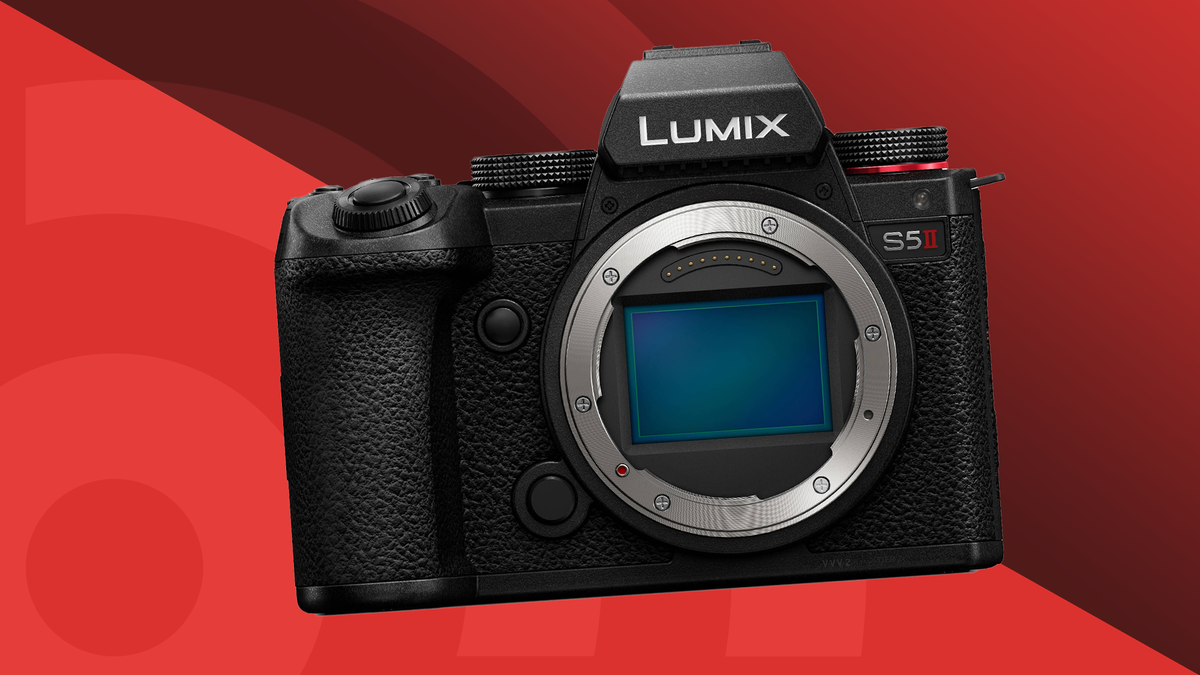
Whether you’re creating short-form content or directing a feature-length film, you'll need the best video camera to elevate your production value. However, there's no one-size fits all, and that's why you're here to find out more, along with making sure you're getting the best price for your dream movie-making tool.
You need a camera that suits what you shoot. What we’ve learnt from properly testing video cameras is that the right choice comes down to what, how and where you’re recording. If we're going to recommend one video camera that ticks the most boxes, it has to be the Panasonic Lumix S5 II. Its full-frame sensor produced excellent open gate (un-cropped) 6K video during our tests, aided by capable phase detection autofocus and super-impressive image stabilization. It's also directly compatible with a decent range of L-mount lenses and represents excellent value.
We rank the Lumix S5 II as our favorite video camera, but that doesn’t mean it will be the right fit for you. That’s why we’ve covered all bases below, featuring a range of video cameras to suit different videographers and budgets. Whether a vlogging compact or a professional flagship, every recommendation here is based on the results of our comprehensive reviews. The idea is to give you all the feedback and advice you need to make an informed choice about which video camera you should buy.
Top 3 picks
Don’t have time to read our full list of the best video cameras? Our top three choices cover the best budget, premium and overall options. When you find one that takes your fancy, use the links to jump to our full write-up.
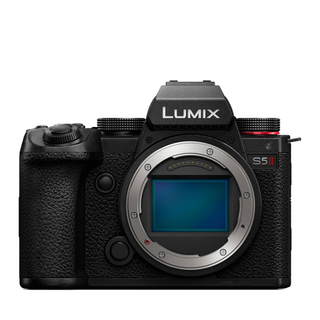
The best value video camera overall
Neat proportions, uncropped 6K and effective phase detection AF make the S5 II a fantastic value tool for quality video.
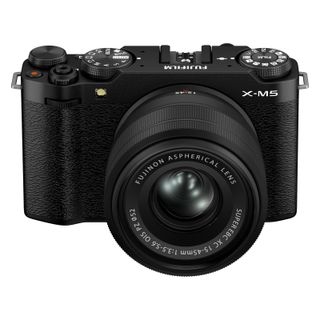
The best cheap video camera
A tiny retro Fujifilm with 6K open gate video recording, a vertical video mode plus Film Simulation dial – for an unbeatable price.
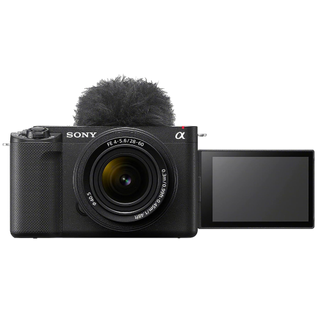
The best premium vlogging camera
Pairing a full-frame sensor with a compact build and AI smarts, the Sony ZV-E1 is the most capable vlogging cam you can buy.
Best by use-case
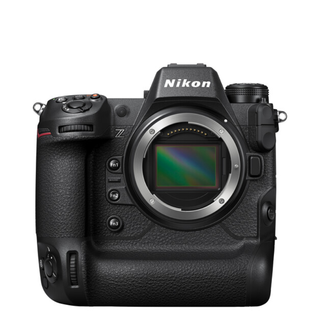
The best 8K video camera
Built like a sturdy DSLR, Nikon’s landmark Z9 is part of a growing list of mirrorless cameras capable of shooting 8K/60p video.
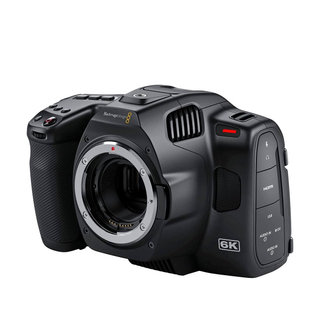
The best video camera for filmmaking
Unforgiving for beginners, the Cinema Camera 6K delivers superb 6K video with boundless editing possibilities for pros.

The best beginner vlogging camera
Refined successor to the ZV-E10 is a powerful little 4K camera with superb autofocus for vlogging on the go.

The best stabilized pocket camera
A 1-inch sensor and bigger display are welcome upgrades to DJI’s compact gimbal cam, which now offers a useful portrait mode.
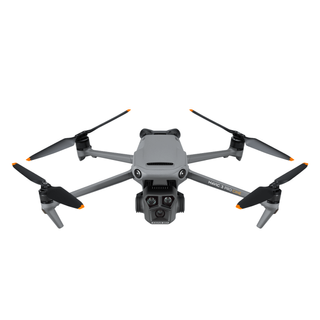
The best drone for video
The world’s first triple-camera drone is the most versatile Mavic to date, provided you’re happy to deal with its weight restrictions.
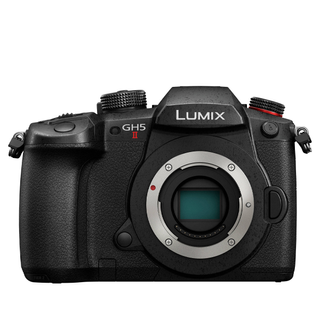
The best budget video camera
The GH5 was already a great choice; the Mark II adds new tricks like wireless live streaming to make it an even better video camera.

Tim is TechRadar's Cameras editor, with over 15 years in the photo video industry. Through his work in tech journalism and freelance videography, Tim has developed a deeply technical knowledge of recording equipment, with practical experience of what makes a good video camera. Tim notes, "there's no one-size-fits-all video camera. In putting together this list, we've tried to cover a range of shooting styles and requirements. That includes premium 8K cameras for high-res cinematography, compact options for run-and-gun videography, and pocket-friendly cameras for quality vlogging."
The best video cameras in 2025
Why you can trust TechRadar
Below you'll find full write-ups for each of the best video camera picks in our list. We've tested each one extensively, so you can be sure that our recommendations can be trusted.
The best value video camera overall





Specifications
Reasons to buy
Reasons to avoid
Panasonic Lumix S5 II sample video
✅ You shoot for social: The S5 II can open gate video, so no unnecessary loss of detail when shooting in narrower aspect ratios than 16:9.
✅ You work handheld a lot: Superb image stabilization, phase-detection autofocus, a lightweight a durable body, the S5 II suits run-and-gun filming.
❌ You like slow-motion effects: The S5 II's 4K /60p incurs a 1.5x crop, which can be limiting for shooting wide angle.
❌ You care what your camera looks like: We'd describe the S5 II as functional over fashionable.
A timely update to one of our favorite video cameras, the Panasonic Lumix S5 II cements its status with a fleet of improvements. Despite compact proportions, we found it reassuringly solid yet comfortable to use during our review, with plenty of dedicated dials and buttons. Video is where the S5 II excels: in testing, we found the quality of its 6K/30p footage excellent, with rich colors and wide dynamic range. Usefully, 10-bit recording is available across almost all resolutions and frame rates. The S5 II can also record uncropped footage using the sensor’s full 3:2 aspect ratio, which offers welcome versatility when cropping content for social.
The S5 II is Panasonic’s first mirrorless model with phase detection AF for video, and it works dreamily. Paired with image stabilization that’s superbly effective for handheld work, it’s a great choice for run-and-gun videographers, even if the 1.5x crop on 4K/60p video can be limiting. Serious filmmakers will find the Lumix S5 IIX even more compelling, but features like unlimited recording times mean the S5 II is a fantastic tool for high-quality video.
Read our in-depth Panasonic Lumix S5 II review
The best cheap 6K video camera





Specifications
Reasons to buy
Reasons to avoid
Fujifilm X-M5 sample video
✅ You want 6K video for less: You won't find more bang for your buck than the X-M5 – 6K open gate video is the tip of the iceberg in this sub $1,000 / £1,000 stunner.
✅ You'd like to travel light: The X-M5 is one of the smallest cameras in this guide plus it packs the retro charm – making it ideal for every day photography too.
❌ You shoot a lot of run-and-gun footage: New cameras this cheap don't typcially include in-body image stabilization. If you're likely to shoot shaky footage, you'll need to activate the camera's less effective electronic stabilization, or use a gimbal.
❌ You need a robust camera: The X-M5 is an entry-level camera not built to withstand the rigors of heavy use in tough conditions.
The X-M5 is Fujifilm's entry-level, video-focused mirrorless camera for beginner creators and filmmakers who will be spoiled by its powerful video features, all packed into a dinky, retro body. Offering unbeatable value, the X-M5 shoots 6K 10-bit video from the full height and width of the camera's sensor (otherwise known as open gate), which is a 26MP Super 35 (APS-C) CMOS with a 3:2 aspect ratio. Open gate means you don't waste any pixels when you're shooting video in a narrower perspective than the traditional 16:9, say for social, and indeed the X-M5 features a 9:16 vlogging mode with Full HD resolution.
Most rival brands simply aren't making mirrorless cameras at this cheap price point, and so the X-M5 should deservedly be very popular with filmmaking newbies, plus it doubles up nicely as an every day photography camera, with a wide range of excellent X-mount lenses to choose from. Serious pros will be put off by the basic build quality that comes in this price bracket, while the lack of in-body image stabilization is far from ideal for those that shoot run-and-run and need their shaky footage smoothed out. However, we found in testing that electronic stabilization does a decent job of that, while the direct access to Fujifilm's lovely Film Simulations through the retro dial is a nice touch. The design is well thought out too, with ports out of the way of the vari-angle touchscreen. If you're a video-first creator on a shoestring, the X-M5 is our favorite camera from 2024.
Read our in-depth Fujifilm X-M5 review
The best premium vlogging camera





Specifications
Reasons to buy
Reasons to avoid
Sony ZV-E1 sample video
✅ You work alone: Equipped with the latest AI-tech, the ZV-E1 is the ultimate camera for content creators who operate solo alone yet want a high-quality output.
✅ You want the best 4K video in any light: The ZV-E1 inherits the Sony A7S III sensor tech which remains one of the best 4K camera around, yet it costs much less.
❌ You shoot long videos: Cameras like the FX3 or A7S III feature cooling vents, unlimited record times and dual card slots. The ZV-E1 does not.
❌ You need a robust camera: The ZV-E1 is made out of recycled plastics, whereas pricier models are made out of tougher materials that will stand up better to heavier use.
Combining compact proportions with class-leading video, the ZV-E1 is a fantastic pick if vlogging is your genre. It's the lightest Sony camera with in-body image stabilization, which means it’s comfortable to work with when vlogging alone. On the other hand, we were a little disappointed by the vari-angle display in testing, finding it difficult to see outdoors. It’s also a shame that the ZV-E1 has only one card slot and no cooling vents.
Still, the ZV-E1 is undeniably a winner for video. In our tests, its excellent 12.1MP sensor produced clean 4K/60p footage in all lighting scenarios. We also found that its S-Cinetone color profile looks fantastic straight out of the camera, without any post-production. Its image stabilization proved excellent as well, smoothing out handheld footage. AI smarts help to keep shots reliably in focus, while a neat Auto Framing trick tracks subjects so effectively that you might believe that a manual operator was responsible – a big help for vloggers shooting solo.
Read our in-depth Sony ZV-E1 review
The best 8K video camera





Specifications
Reasons to buy
Reasons to avoid
✅ You need a dependable camera for most situations: Built like a tank and good for lengthy record times, the Z9 offers the kind of reliability demanded by video pros.
✅ You want excellent 8K: Following a firmware update, the Z9 boasts 8K/60p with internal RAW – that's a first for a mirrorless camera.
❌ You want a lightweight tool: Compared to almost every other camera in this guide, the Nikon Z9 is both heavy and bulky.
❌ You only shoot video: The Nikon Z9 could be overkill if you only shoot video and don't need the high-end build quality and performance.
Nikon’s full-frame flagship is a landmark model: it’s the first pro camera to ship with no mechanical shutter. And while its bulky, rugged DSLR styling felt comfortably familiar, our testing confirmed that the Z9 is a truly modern machine. One of a select few cameras that can record 8K/30p footage, the Z9 also offers filmmakers a candy store of capabilities. Besides 4K slow-mo at 120fps, it serves up sharp oversampled 4K video, together with lengthy 125-minute recording times and reliable Eye AF tracking. We found that image quality from the 45.7MP stacked CMOS sensor was superlative, with huge cropping potential, aided by superb image stabilization.
And it’s only going to get better: a firmware upgrade is set to unlock a host of recording skills later this year, including the option to shoot raw 8K/60p video internally – a first for any mirrorless camera. Its abilities might be overkill for many, but with rapid performance, a two-way tilting touchscreen and video enhancements already inbound, we think the Z9 is a seriously impressive, competitively priced tool for professional videographers. That said, if you don't need the long video record times and battery life of the Z9, the Nikon Z8 offers the same video quality in a smaller body that costs a lot less.
Read our in-depth Nikon Z9 review
The best video camera for filmmaking





Specifications
Reasons to buy
Reasons to avoid
✅ You want superb cinema footage from a handheld: Blackmagic’s excellent 12-bit codec and workflow are perfect for serious filmmakers who demand impeccable raw video quality.
✅ You’re operating on a tight budget: For the video spec you get, and the cheap L-Mount lenses available, you're getting excellent bang for buck.
❌ You want a video-first hybrid camera: The Cinema Camera 6K is practically useless for still photography.
❌ You're into run-and-gun filming: The Cinema Camera 6K lacks user-friendly features like tracking autofocus and in-body stabilization.
Lacking many of the niceties most users would expect, the Blackmagic Cinema Camera 6K requires a high degree of video knowledge. But the pay-off for this barrier to entry is an impressive set of capabilities: in our review, we found it produces superb raw video quality at 6K resolution. Its big sensor and dual native ISO also allow the Cinema Camera 6K to capture clean footage in dark conditions, while Blackmagic’s proprietary 12-bit codec offers the potential for endless tweaking in post.
Factor in L-mount lenses and ND filters and it quickly becomes a chunky camera. It’s not cheap, either, and you don’t get user friendly features such as tracking autofocus or in-body image stabilization. That said, the price is relatively low for the pro-grade video spec. You need to know how to color grade to unlock its best, but serious filmmakers will appreciate the flexibility. If you want sublime 6K from a handheld camera and you have the requisite editing skills, the Cinema Camera 6K is a serious contender.
Read our in-depth Blackmagic Cinema Camera 6K review
The best beginner vlogging camera




Specifications
Reasons to buy
Reasons to avoid
✅ You want a compact interchangeable lenses vlogging cam: The Sony ZV-E10 is a tiny 4K vlogging camera with a fully articulating screen and a host of compact lenses.
✅ You want a high-quality streaming camera: The Sony ZV-E10 is a fine webcam or live-streaming camera with plug-and-play ease.
❌ You want a viewfinder: You're relying on the touchscreen only for composing videos and photos.
❌ You shoot run-and-gun Image stabilization is only OK. If you want stable footage on the move, a gimbal is advisable.
If you want a capable video camera for vlogging that fits in your pocket, then the Sony ZV-E10 II is an excellent option. Despite its compact and lightweight build, the ZV-E10 II packs the same 26MP APS-C sensor as pricier Sony cameras such as the FX30 and A6700, and it can shoot sharp 4K footage (up to 60fps), plus Full HD slow-mo at up to 120fps.
Mic-in and headphone ports give welcome audio flexibility, while the Multi-Interface hot shoe mount means you can readily accessorize your setup. The ZV-E10 II also enjoys a wide range of lenses perfect for vlogging, including compact wide aperture prime lenses.
Despite the lack of a viewfinder which makes the ZV-E10 II feel firmly in the video camp rather than hybrid, we felt that the fully articulating touchscreen also makes framing a cinch, and UVC/UAC computer connectivity unlocks easy live-streaming. Sony addressed the two major flaws with the ZV-E10 in this second-gen model; providing a 4K/60p video setting and reducing rolling shutter distortion when panning. The Sony ZV-E10 is pricier than its predecessor, but still comes in at a beginner-friendly price tag.
Read our in-depth Sony ZV-E10 II review
The best stabilized pocket camera





Specifications
Reasons to buy
Reasons to avoid
✅ You shoot handheld solo vlogs: The three-axis gimbal offers unmatched stabilization, while ActiveTrack works like a virtual cameraman.
✅ You switch between vertical and horizontal video: The neat LCD screen swivels to instantly switch between video formats.
❌ You shoot a lot of photos, too: The Pocket 3 shoot OK photos, but you're getting it for video really.
❌ You’re happy with your smartphone: If you prefer shooting with your phone, a gimbal mount like the DJI OM 5 might make more sense.
The Pocket 2 was one of our favourite tools for solo videographers. The DJI Osmo Pocket 3 upgrades the shooting experience. A larger 1-inch sensor and battery make it heavier than before, although we actually think this gave it a sturdier feel in the hand. The former generally produced great dynamic range and color in testing, as well as better results in low light. The latter means the Pocket 3 can record 4K video for a solid two hours.
Its overall design remains the same, with a gimbal-stabilized lens sitting atop a pocket-friendly body. One of our favorite features in testing was the new 2-inch OLED display. It’s still on the small side, but felt like a great improvement over the Pocket 2 and much more accessible. Together with portrait filming, faster slow-mo frame rates and live-streaming support, we think these skills make the Pocket 3 a fantastic choice for content creators filming alone.
Read our in-depth DJI Osmo Pocket 3 review
The best drone for video





Specifications
Reasons to buy
Reasons to avoid
DJI Mavic 3 Pro sample video
✅ You need telephoto lenses: If you can make use of its two telephoto lenses, the Mavic 3 Pro is more versatile than any single-camera drone.
✅ You need an excellent main camera: The 24mm Hasselblad camera with Four Thirds sensor, 5K video and adjustable aperture combine to great effect.
❌ You only need a wide-angle camera If one camera is enough, the Mavic 3 Classic is better value.
❌ You’re a drone beginner The Mavic 3 Pro is easy to fly and offers excellent safety features, but it comes with flight restrictions given its weight.
Not every aerial filmmaker will need three cameras on a drone. For those that do, the Mavic 3 Pro pushes the boundaries of creative potential: equipped with a 20MP Four Thirds main camera (with adjustable aperture), as well as 70mm and 166mm telephoto cameras, it’s the most versatile Mavic drone to date. In testing, video results proved predictably impressive, with the 70mm camera hitting the sweet spot between quality and functionality.
Our review also found that the Mavic 3 Pro flies extremely well, with a suite of safety features making it intuitive enough for even beginners to pilot. The Bypass setting in particular is highly effective at keeping flights smooth and safe while avoiding obstacles. It's much easier to transport than the DJI Inspire 3 too, although its European C3 weight rating means it is subject to restrictions. If you only need a wide-angle camera, there are more affordable and accessible alternatives. But if you want a consumer drone with maximum flexibility for airborne videography, the Mavic 3 Pro delivers.
Read our in-depth DJI Mavic 3 Pro review
The best budget video camera





Specifications
Reasons to buy
Reasons to avoid
Panasonic GH5 Mark II sample video
✅ You want bang for buck: The GH5-series offers excellent value for money if video is your focus.
✅ You want the bells and whistles: An excellent choice of 4K video codecs and features, plus live streaming capabilities.
❌ You need the best autofocus: The GH5 II predates Panasonic rolling out its more effective phase detect autofocus, as found in the S5 II.
❌ You own a GH5 already: For most people there isn't enough reason to update from the GH5 to the GH5 II.
The original Panasonic GH5 was arguably the first mirrorless camera to do both 4K video and stills photography well, but its successor faces much stiffer competition. While it doesn’t represent a huge upgrade, the Mark II stands out by virtue of its built-in wireless live streaming capabilities. At the time of writing, you won’t find these on any other mirrorless camera. While its sensor may be relatively small (which does limit its low-light capabilities), our tests also revealed it to be a mighty video camera.
In our review, we found its overall video skills remain strong: 10-bit 4:2:2 footage can be recorded internally or externally, there’s a wide variety of frame rate options and various anamorphic video resolutions, plus Panasonic’s flat V-Log profile gives you 12 stops of dynamic range to play with in post-production. We think the fact that the GH5 Mark II includes all this in a compact, lightweight and weatherproof body with effective IBIS makes it all the more impressive. Consider it if you don't have the budget (or perhaps the need) for the GH6.
Read our in-depth Panasonic GH5 Mark II review
Also consider
We've reviewed a whole range of video cameras, which means there are plenty more that almost made it into this list. Here are a few honorable mentions to consider.
Best Canon – Canon EOS R5 Mark II: Our 2024 camera of the year packs seriously powerful video features, including 8K video recording with no rolling shutter thanks to its stacked 45MP full-frame sensor. Autofocus performance is exemplary, as is its in-body image stabilization.
Best compact – Sony ZV1: Another budget choice ideal for aspiring YouTubers, the ZV-1 shoots 4K video, 20MP stills and features a built-in bright zoom lens that covers standard perspectives, together with snappy autofocus.
Best video tools – Panasonic Lumix GH7: A Micro Four Thirds hybrid with a host of video features, the GH7 offers a massive number of video options, backed up by fast phase-detect autofocus. There’s built-in cooling for unlimited recording times, with support for 5.7K 30p ProRes RAW HQ internal recording. Its list of modes and settings caters to every level of video creator.
Best complete video camera for enthusiasts – Fujifilm X-S20: A mid-range all-rounder with a host of video features, the X-S20 is a great choice for content creation. Seasoned videographers will appreciate 6K open-gate 10-bit 4:2:2 video, with the option to shoot in ProRes RAW. On the other hand, the Vlog mode makes it simple for beginners to record handheld video.
Best action camera for video – GoPro Hero 13 Black: If you want an action camera with cinematic skills, the Hero 13 Black is our top pick. A polished 5.3K camera with an 8:7 aspect ratio that’s handy when cropping for social, it supports 10-bit log capture and has an HLG HDR video color profile. You also get 120fps slow-mo and clever Lens Mods.
Best dedicated video camera, for less – Blackmagic Pocket Cinema Camera 6K Pro: If you can work with its quirky interface, the Pocket Cinema Camera 6K Pro is a relatively affordable and portable tool for professional videographers. It benefits from a host of useful recording features, plus a Super 35 Sensor that’s capable of fantastic quality.
Best point-and-shoot for video – Sony Cyber-shot RX100 VII: It's dated, but if you want a capable video camera that fits in your pocket, with built-in lens and a huge zoom range, then the RX100 II is our top pick.
How to choose the best video camera for you
As you’ll find in our list above, the best video cameras come in a range of shapes and sizes. Our guide covers everything from full-frame flagships to compact vlogging cameras, as well as smaller mirrorless models for shooting on the move. Which is right for you will depend primarily on what and where you plan to film, as well as your production budget.
It can be tempting to focus on flagship cameras, which usually offer the highest resolutions and frame rates, plus comprehensive options when it comes to color profiles and video modes. However, you’ll often pay a significant premium for these models. Some pro-grade options are also bulky and heavy, like the Nikon Z9, while others – such as the Blackmagic Pocket Cinema Camera 6K Pro – assume a certain level of expertise, which means they’re only worthwhile for seasoned amateur filmmakers or pros with the means and skills to make the most of their capabilities.
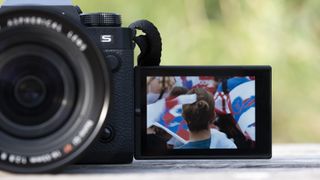
Luckily, you don’t need to spend thousands to secure a versatile video camera. Alternatives with APS-C or Micro Four Thirds sensors are generally smaller and more affordable than their full-frame rivals. They might perform less well in low light, but cameras such as the Panasonic GH7 can still capture outstanding detail at resolutions of 4K and above, with the benefit of a more convenient form factor. The best also feature a full complement of video modes, giving you added editing flexibility.
Other aspects to consider include articulating touchscreens, which make it easier to frame your footage from different angles. If audio is particularly important to your project, consider a video camera with microphone and headphone ports. Recording time limits will be crucial if you’re producing lengthy clips, while the smoothing abilities of in-body image stabilization are a key consideration if you’re planning to shoot handheld.
What’s the best video camera for those on a budget?
While the very best, cutting-edge video cameras will inevitably cost a lot of money, you don’t need to blow thousands on something to shoot excellent footage. There are plenty of affordable camera models available which allow you to record sharp, stable video in a range of scenarios.
If you’re looking for an accessible camera that can capture steady shots on the go, something like the DJI Pocket 3 could be just what you need. Small enough to slip in your pocket, its three-axis gimbal can capture shake-free 4K shots while you walk. You get a lot for your money – including subject tracking with the motorized head. So for solo vloggers on a budget, it’s well worth considering.
Alternatively, a rugged action cam like the GoPro Hero 13 Black puts a lot of video performance in a small, sturdy and relatively affordable package. While it can’t capture the same cinematic depth of field effects you’d get from a more expensive model, it can record rock-steady results in sharp, bright 5.3K. It can also go anywhere, connect readily to your smartphone for live streaming and produce creative results thanks to its range of preset shooting modes.
Looking for a little more manual control? Sony’s ZV-E10 II combines a compact form factor with plenty of video versatility, at a very fair price. Overheating is an issue when shooting 4K video at 60fps while stabilization performance is questionable, but it also features a fully-articulating touchscreen, ports for external audio gear and the option to swap lenses to suit the scenario.
If your budget can stretch a little further, the Panasonic GH5 Mark II offers outstanding value. It builds on what was already one of the best mirrorless cameras for shooting 4K content, offering a wide variety of 4K frame rates, resolutions and color profiles in a compact, lightweight body. What really gives it an edge is the inclusion of built-in wireless live streaming skills. It can send footage in real-time to the likes of YouTube, without any additional kit, which makes it a brilliantly accessible option for streamers.
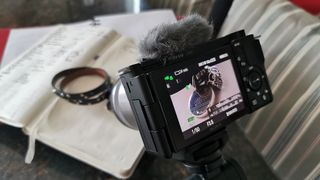
Meet the team
Our team of reviewers has a wealth of experience when it comes to testing and understanding video cameras. Over the last 20 years, our experts have reviewed all of the latest and greatest tools for filmmaking. Each of them has a genuine practical appreciation of what elements make a great video camera.

Tim is TechRadar's Cameras Editor and has been cutting his teeth in the photo and video industry for almost 20 years. He looks after all of TechRadar's cameras content, covering buying guides, features, reviews and news. He's shot a lot of video in his career, so he's intimately familiar with what a good video camera looks and feels like.

Rod is an independent photographer and photography journalist with more than 30 years' experience. He's previously worked as Head of Testing for Future’s photography magazines, including Digital Camera, N-Photo, PhotoPlus, Professional Photography, Photography Week and Practical Photoshop, and as Reviews Editor on Digital Camera World.
Matt has written and reviewed cameras for just about every leading photo publication, including Digital Camera World (where he was Editor), What Digital Camera, WEX and of course TechRadar.

Mark is TechRadar's Senior news editor and has been a technology journalist since 2004. Formerly Trusted Reviews and TechRadar's cameras editor, Mark has tested cameras over many years from all of the leading brands.

James Abbott is a professional photographer and freelance photography journalist. He contributes articles about photography, cameras and drones to a wide range of magazines and websites where he applies a wealth of experience to testing the latest photographic tech.

Paul is a digital expert. In the 20 years since he graduated with a first-class honours degree in Computer Science, Paul has been actively involved in a variety of different tech and creative industries that make him the go-to guy for reviews, opinion pieces, and featured articles. You'll also find his writing in other places, including Creative Bloq, Digital Camera World, and 3D World Magazine.
How we test video cameras
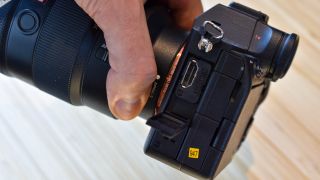
☑️ 100s of cameras reviewed
☑️ 15 years of product testing
☑️ Over 16,000 products reviewed in total
☑️ Nearly 200,000 hours testing tech
The key features for a good video camera are its autofocus, stabilization and audio options, as well as the outright quality of its footage. These are the core areas that we focus on in our real-world tests.
To review video quality, we record at a camera’s highest available resolution and frame-rate in a range of handheld settings, to cover the kind of scenarios that many videographers might shoot. We shoot walk-and-talk clips to test how each camera handles aspects such as detail and rolling shutter. We also shoot in high-contrast conditions to check how well the auto-exposure adapts to lighting changes.
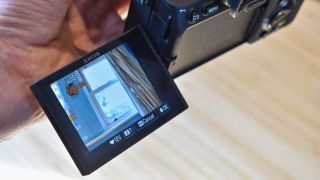
These tests are also a good way to test how a video camera’s Face and Eye tracking autofocus performs, as well as the reliability of its image stabilization, if available.
Many of the best video cameras include features such as flat color profiles, 10-bit video, articulating touchscreens and, in the case of the Panasonic GH5 Mark II, wireless live-streaming.
We test all of the functions offered by a video camera to see how they match up to their closest competitors, then draw informed conclusions based on our overall impression of the camera’s construction, design, features and the quality of its output.
Get daily insight, inspiration and deals in your inbox
Sign up for breaking news, reviews, opinion, top tech deals, and more.

Tim is the Cameras editor at TechRadar. He has enjoyed more than 15 years in the photo video industry with most of those in the world of tech journalism. During his time as Deputy Technical Editor with Amateur Photographer, as a freelancer and consequently editor at Tech Radar, Tim has developed a deeply technical knowledge and practical experience with cameras, educating others through news, reviews and features. He’s also worked in video production for Studio 44 with clients including Canon, and volunteers his spare time to consult a non-profit, diverse stories team based in Nairobi. Tim is curious, a keen creative, avid footballer and runner, and moderate flat white drinker who has lived in Kenya and believes we have much to enjoy and learn from each other.
- Mark WilsonSenior news editor
- Chris Rowlands
- Sam Kieldsen
